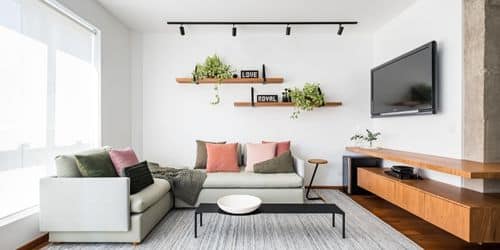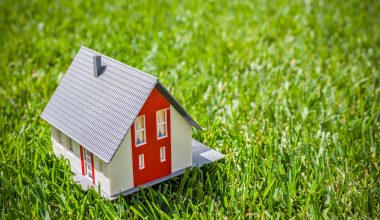After some time in the rental company, you’ll realize that you should quit wasting money on rent month after month and instead buy a house or an apartment. If you are about to buy your first apartment, this post will offer you a checklist of items you should review before buying. You’ll also see the benefits of buying an apartment building and know if it is a good investment option.
Considerations Before Buying an Apartment
#1. Examine your position in the rent vs. own equation.
First and foremost, whether you should buy or rent an apartment depends on the market conditions where you live—and how long you intend to stay. Using a rent vs. buy calculator, which allows you to enter your ZIP code or town and/or how much you’d expect to pay to own or rent in your area, is one way to crunch all of these statistics at once.
Assume you pay $1,000 per month in rent but $200,000 to purchase an apartment. Buying can appear more expensive at first because a down payment and closing charges might total up to $48,000. However, if you stay put for at least five years, the balance shifts, making buying the less expensive alternative.
The reason is that, after five years, you’ve accumulated equity in your home rather than squandering it on rent. So compare prices in your location and see what makes sense for you.
#2. Determine whether buying an apartment is financially feasible.
Another consideration is how much you can afford to pay for an apartment. Use our house affordability calculator to enter your income, debts, and down payment savings.
Assume you earn $70,000 per year, pay $250 per month on credit cards and other bills, and have $40,000 set aside for a down payment. That means you could afford a $263,000 apartment, which would cost $1,575 each month. Knowing these figures is critical since they will help you limit your apartment search to your preferred price range.
#3. Learn the difference between co-ops and condos.
If you’re seeking to buy an apartment, you’re likely to come across both condos and co-ops. So, what’s the distinction?
“A condo is similar to buying a home in that you get the deed to the unit, and generally, if you ever want to rent out your unit, you will be able to without any stipulations except, of course, that the new tenant must qualify through the condo board,” says Douglas Elliman real estate agent Lila Nejad.
“A co-op is buying a stake in a building in which you own the unit, but there are more board criteria to qualify for purchase, and non-US nationals are significantly less likely to get into most of these buildings.” Subletting laws are also often significantly tougher, often with two-year limitations or no third-party renting at all.”
The Apartment Buying Procedure
The apartment-buying procedure is not something to be worried about. Simply follow the steps below to buy an apartment.
#1. Create objectives:
What do you want to achieve by buying an apartment building? Once you’ve decided on a goal, figure out how much money you’ll need to gain from your investment to break even.
#2. Set your building budget:
Knowing how much you want to spend is essential when buying an apartment building. Investors should ensure that they leave enough money to cover repairs as well as to invest in other properties to diversify their portfolios.
#3. Understand cash flow
Assuming you want to make money from your apartment building, you will need to understand cash flow. Use a rental calculator to simulate potential deals so you know what to expect.
#4. Choose a market:
Always look into your local market before venturing out of state for the benefit of ease and confidence. Create a few deals in different markets to discover what is possible. It is easier to handle a building in a close region that you are more familiar with.
#5. Get pre-approved for funding:
After deciding on a market, investors should get pre-approved for financing. Obtain approval from at least two different lenders so that you can compare rates once you have found a house.
Now is the time to look for an apartment building and make an offer. Investigate properties via the MLS, commercial real estate websites, or by working with a broker. Visit many properties, and when you discover one you like, make an offer.
#6. Inspect the building:
Nobody wants to buy an apartment that isn’t in the condition it was advertised in. Make certain that the building is inspected. The HVAC system, plumbing, and electrical systems are all important to inspect.
Hire a property management company to take the hassle out of managing your investment. Be aware that the property management company you select will either make or break the success of your investment. Before making a decision, conduct research, read reviews, and interview multiple companies.
#7. Secure financing and close:
Present the deal to the lenders who pre-approved you so that you can compare quotations. Choose a lender, and they will assist you in being fully approved and ready to close.
#8. Don’t stop there:
Keep expanding your portfolio! Once you have established your investment and are earning a stable income flow, continue building your portfolio by looking for your next investment opportunity, perhaps buying another apartment building?
The Benefits and Drawbacks of Buying an Apartment Building
Buying an apartment building is a significant investment and expense. As with any major purchase, there are advantages and disadvantages to consider before making the commitment.
Advantages of Buying an Apartment Building
- The income potential is substantial: A large multi-unit location, such as an apartment building, will help you expand your portfolio faster than a single-family rental. More units equal more money in the bank.
- It’s a growing asset: All real estate, including apartment complexes, grows in value over time. You will earn if you decide to sell the building in the future.
- The cash flow is consistent: Investors can rely on their apartments to generate a steady stream of revenue. Even if the units are vacant or the tenants are not paying, there are usually additional paying units available to assist offset expenses.
The Drawbacks of Buying an Apartment Building
- Down payments can be costly: Buying apartment buildings are a major investment with a high price tag. As you might guess, the down payment for a multi-unit property is substantially higher than that on a single-family home.
- Difficult to diversify market exposure: Because apartment buildings are so expensive, new investors rarely have the opportunity to buy a large number of them. Apartment building would undoubtedly help investors expand their portfolio, but diversifying it across market classes will be tough.
- The tenant turnover rate is higher in apartment complexes than in single-family rental units. This means that landlords will have to spend time (and frequently money) recruiting new tenants and preparing units for occupancy.
5 Tips For Buying An Apartment Building
Are you convinced that an apartment complex is a good investment for you? Here are five expert recommendations to guide you through the buying process.
#1. Locate off-market properties.
You must discover a fantastic price if you are serious about buying an apartment building. Here are two options.
- Get real estate investment software: You can join up for real estate investment software that focuses on assisting investors in purchasing off-market properties.
- Engage an investor-friendly agent: Another option is to hire a real estate agent who specializes in assisting investors and has access to a large number of sellers who want to sell but do not want to advertise their properties on the market.
#2. Select your property type
Apartment buildings come in a variety of styles, including high-rises, mid-rises, garden-style, and walk-ups. Before determining which type to buy, consider the current real estate trends in your area, as popularity varies by region. Your real estate agent might provide suggestions based on what they observe on a daily basis.
You must also select if you want a new apartment complex or one that needs some work. Fixer-uppers are often more affordable, but they require more work and a sharp eye for undervalued properties.
#3. Go to several properties and do your research.
Don’t buy the first apartment you come across. Investigate local demand, conduct an inspection to determine the condition of the home, and visit as many homes as feasible.
The ratio of renters to owners in a region might be a reliable predictor of the success of your apartment buying investment. Cities with a higher proportion of renters than owners will have a higher demand for apartments, so research these data before making a purchase.
#4. Be familiar with the financial process and crunch the data
A 20% down payment is required to buy an investment property, as well as insurance, mortgage payments, maintenance and administration charges, and marketing expenses.
Maintenance costs might eat away at your profit margins. Prior to buying a complex, research the local going rate for some of the most frequent upgrades, such as repainting the building’s outside and the interiors of the units for when tenants move out.
Make certain that you will be in the black following all of these charges. There is no worse situation than owning a multi-million dollar apartment complex that is losing money month after month.
#5. Select the best lender
There are three common forms of apartment building loans (excluding residential loans for structures with fewer than four units):
- Government-backed apartment loans include high LTV (loan-to-value) ratios and loan amounts ranging from $750,000 to $6 million. This loan is available from Fannie Mae, Freddie Mac, and the FHA. Typical rates range from 3.5 to 6%.
- Bank Balance Sheet Apartment Loans: Many local lenders enjoy lending to investors who want to buy flats. Loan periods range from 20 to 25 years, with balloon payments ranging from 3 to 15 years and interest rates ranging from 3-6 percent.
- Short-Term Apartment Financing Options: These loans are designed to assist investors in competing with cash buyers by providing mortgages on short notice. The minimum loan amount is $100,000, with LTVs up to 90%. Rates are high, ranging from 7.5 to 12 percent.
Once you’ve determined which form of loan is best for you, start examining each lender’s offerings. Each bank and lender is unique, so thoroughly research all of your possibilities. A slight increase in interest rates might eat into your profits.
Is Buying an Apartment Building a Good Investment?
The risk-adjusted return—the amount of money you may hope to make in the face of the risk you incur—is the most crucial factor to consider when making any investment. Overall, apartment complexes offer a high risk-adjusted return. However, this varies for every property and is usually determined by the purchase price of the apartment.
In short, buying apartment buildings is a good investment in general, but not every apartment building is a good investment. When appraising a property, would-be investors must exercise prudence and consider numerous aspects, including the property’s condition, pricing relative to other similar properties, local real estate trends, and rental vs. ownership demand in the area. The simplest way to achieve this is to use a rental property calculator, which forecasts the profits you can expect from acquiring a specific apartment complex.
People will always need a place to live, and renting an apartment is frequently the most cost-effective option. Most American cities currently lack cheap housing, which bodes well for owners of apartment complexes that provide affordable to mid-level living. On the other hand, a large number of new luxury flats are now being built, and those will be the first to lower rent or go unoccupied if the economy falters.
Conclusion
Buying an apartment can be comparable to buying a single-family home. The loan application and closing processes are nearly identical. The crucial aspect is estimating how much apartment you can afford and then deciding whether to buy or rent. Once you’ve determined that, you can plan your funds in advance of your decision.
Buying an Apartment FAQs
How much money should I save for my first apartment?
A common rule of thumb is that your income should be three times your rent. So, if you want to live somewhere that costs $1,000 per month, you might need to make at least $3,000 per month. Many apartment complexes and landlords adhere to this regulation, so it makes sense to limit your search to rentals that you are likely to qualify for.
Is renting a waste of money?
Renting is not a bad investment. Instead, you are paying for a place to live, which is far from wasteful. Furthermore, as a renter, you are exempt from many of the pricey expenses connected with home ownership. As a result, in many circumstances, renting is preferable to buying.
What is the 50 20 30 budget rule?
According to the rule, you should spend up to 50% of your after-tax income on necessities and commitments that you must have or fulfill. The remaining half should be divided as follows: 20% for savings and debt payments, and 30% for whatever else you desire.
- WHAT CREDIT SCORE DO YOU START WITH: All You Should Know
- Property Valuation: How to Value Your Real Estate Investment & Properties
- Key Money Definition: What is Key Money? (+ Quick Guide)
- MORTGAGE RATES FOR INVESTMENT PROPERTY: Current Mortgage Rates for Investment Property
- Owner, Check Out 5 Tips On How To Rent Your Property!






